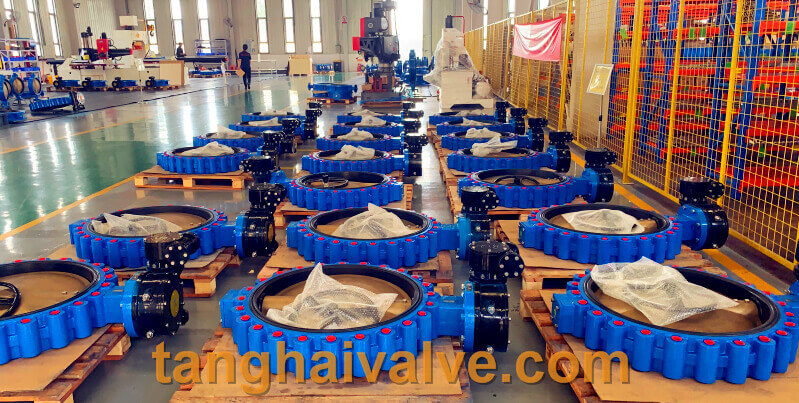Installation and Maintenance of Butterfly Valve
The butterfly valve has become one of the most widely used valves. Although it is only a small part on the fluid pipeline, it has a very large effect. The installation and maintenance of butterfly valves is a science. The correct installation of butterfly valves is the first step to ensure the normal operation of the pipeline, and subsequent maintenance has a positive effect on prolonging the service life of butterfly valves and reducing production costs. This article will talk about the installation and maintenance of butterfly valves for you.

lug type butterfly valve, ductile iron, center lined,
The working principle of butterfly valve
The working principle of the butterfly valve is that the valve stem drives the rotation of the butterfly plate to complete the opening and closing, and the rotation angle is 90°; changing the deflection angle of the butterfly plate can control the flow of the medium. Common butterfly valves include wafer butterfly valves and flange butterfly valves. Wafer type butterfly valve uses double-head bolts to connect the valve between two pipeline flanges. Flange type butterfly valve has flanges on the valve, and bolts are used to connect the flanges at both ends of the valve to the pipeline flanges. Butterfly valve allows fluid speed: liquid ≤ 4.5 m/s, gas ≤ 20 m/s.
Installation direction and position of butterfly valve

ductile iron, DI, butterfly valve, manufacturer, center line, TH valve
Butterfly valves generally have no direction requirements. If required, it should be determined according to the rotation angle of the butterfly valve and the working principle of the pneumatic actuator. The best position of the valve installed on the horizontal pipeline is vertical installation, and vertical downward is not allowed. The valve installation position must be easy to operate; timely installation is temporarily difficult, and the operator must also consider the long-term work of the operator. It is best to keep the valve hand wheel flush with the chest, generally 1.2 meters away from the operating floor, so that it is easier to open and close the valve. The handwheel of the floor valve should be upward, not tilted. For valves that lean against the wall against the equipment, leave room for the operator to stand on. It is necessary to avoid operating from the sky, especially acid-base, toxic media, etc., otherwise it is very unsafe.
Maintenance work of butterfly valve
When maintaining the butterfly valve, pay attention to whether there is water in the pneumatic actuator mechanism. In the wet season, the accumulation of water in the air compressor tank makes the transmission mechanism or the transmission shaft sleeve rust, and the accumulation of water in the air compressor tank in the cold winter weather enters the pneumatic actuator mechanism and freezes, causing aerodynamics. When the actuator is operated, the torque is too large, which damages the transmission components and cannot be operated manually; if the actuator is operated forcibly, the internal parts of the actuator will also be damaged. During maintenance, the discharge valve in the air compressor tank should be opened from time to time and the internal water should be taken out. For butterfly valves with hand wheels, open the turbine box cover to check whether the lubricating oil is normal within 6 months of operation, and keep a proper amount of lubricating oil.
TH Valve is a professional manufacturer of butterfly valve, gate valve, check valve, globe valve, knife gate valve, ball valve with API, JIS, DIN standard, used in Oil, Gas, Marine industry, Water supply and drainage, fire fighting, shipbuilding, water treatment and other systems, with Nominal Diameter of DN50 to DN1200, NBR/EPDM/VITON, Certificates & Approvals: DNV-GL, Lloyds, DNV, BV, API, ABS, CCS. Standards: EN 593, API609, API6D
Related news/knowledge:
Ball valve installation and maintenance methods;
Valves’ sealing requirements and daily maintenance;



 © Copyright 2020 Tianjin Tanghaidongyang Valve Co., Ltd. All Rights Reserved.
© Copyright 2020 Tianjin Tanghaidongyang Valve Co., Ltd. All Rights Reserved.